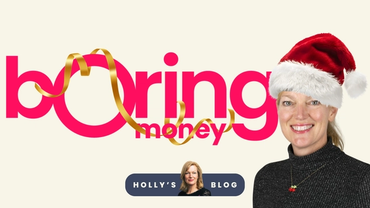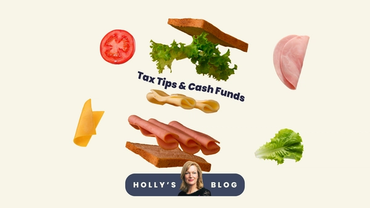Fiscal Drag takes to the stage
11 Nov, 2022

OMG, no wonder we’re all watching Strictly and a collection of oddbods sliming around the Australian jungle. It’s not easy finding things to lift the spirits out there. But read on, mes amis... we start a touch gloomy but end on some high notes!
The Economy Is Toast
The UK economy shrank 0.2% in the third quarter and 0.6% in September. I think any business owner knew that already. With no disrespect meant, the Queen’s funeral slowed all activity, closely followed by various Downing Street Disasters. So when we report slowing growth in Q4 (as we will), then we can officially use the recession label, to lift our spirits in early January.
In October, we asked 1,500 investors what they thought the outlook was for the UK economy in the next 6 months. 7 in 10 said it would get worse. This is an all-time low – you’re far more pessimistic than the former low, that was us going into the second lockdown in the Autumn of 2020. When we asked why, about one-third laid the blame very specifically at the UK Government’s door, rather than more global causes.
Next Friday’s Autumn Statement – why it matters
Everyone already feels less well off. Inflation has leaped out of the textbooks into our everyday discussions because we buy food, fill our cars and (occasionally!) heat our homes. Kantar has estimated the average food shopping bill has gone up by £682.
But keep your eyes on next Friday’s Autumn Statement, for a real understanding of what the outlook for your finances is. This is an important day for consumers and financial markets alike. Here’s a short synopsis of what to expect.
Oops, I’m overdrawn by £50 billion, clumsy me!
The Government has been using the Big Boy equivalent of Klarna and spending more than they have. There’s a £50 billion-ish hole to fill.
Next Friday, Jeremy and Rishi have been told to answer Mr OBR’s (Office for Budget Responsibility) exam question, because markets want some sort of independent marking of the homework that gives confidence that they have a decent and affordable plan.
Some of the class is squeaking that Mr OBR’s questions have too many moving parts and are not focusing on the right thing, but most people are telling them to shut up, play the game and get on with it.
Fiscal Drag takes to the stage
Jeremy needs to rustle up 50 Big Ones. He has two levers. Shove up taxes. And cut spending. Without poking the electorate bear any more than you need to.
If you’re going to do something financially nasty to people, it’s best to do something mathematically difficult to compute, that won’t happen today.
Telling someone their tax rate has gone up from 20% to 22% – for example – is pretty easy for them to compute. And then complain. But telling someone that you’re freezing income tax thresholds doesn’t feel so painful because it’s hard to compute the impact today. Freezing thresholds is also known as fiscal drag and you’ll read a lot on this over the next week.
Here’s my fiscal drag analogy. Give an 8 year old boy a portion of chips. Tell him you’ll give him that same portion of chips when he’s 14. He’ll be absolutely fine with that. By the time he is 14, he will inhale them in one breath and look mournful for the next hour, skulking around the fridge. This is food fiscal drag. Many of us will be skulking miserably around the tax fridge in the coming years.
Here’s one example. The Centre for Economics and Business Research has estimated that 850,000 people will pay the top rate of income tax by 2026-27, up from 400,000 in 2019-20. With inflation increasing the costs of living and pushing wages upwards, more and more of us will be sucked into higher rate tax bands. More of us will hit the maximum lifetime allowance for pensions and get clobbered with tax. And so on.
We’ll report back next week – the blog will be delivered at the end of the day, so I can digest what we’re told and serve up a condensed and translated view to readers.
Pensions – get a wiggle on??
A quick aside on these. Every single Budget and Statement brings speculation that the low-hanging fruit of pensions tax relief will be cut. As a very rough rule of thumb, most of us can put put up to £40,000 a year into a pension (I wish!) and get freebie top-ups from the Government to the tune of 20p for every 80p (basic rate taxpayers) AND claim another 20p back in your annual tax return if you’re a higher rate taxpayer (numbers a smidge different in Scotland but same principle).
This tax relief could be a target for the Chancellor – I really don’t know. But if you are planning to make a pension contribution this tax year, and you have the readies to hand, you may as well do it this weekend just in case. Our pension tables might help if you’re choosing a provider.
Interest rates and a market update
People are of course very concerned about interest rates and mortgages. And it feels inevitable we have more rises to come. But (here’s one glimmer of hope) this won’t go on forever.
This week I hosted a webinar which looked at global markets, what to expect, what 2023 might bring – and we also touched on interest rates. Financial planner and coach Adrian (not a mortgage adviser BUT a former fixed income trader at an investment bank, so he gets this stuff) gives us his outlook. He thinks rates will come down in the second half of the year and has a very wise observation on the questionable logic of taking an early penalty fee hit today, in a rush to lock a future rate in tomorrow.
The webinar covered a wide range of points – global markets, what’s happened, what to expect, US markets, currency risk, and thematic opportunities such as clean energy. My guest, Invesco’s Dr Chris Mellor talked us through all this and more and I really recommend a listen.
For readers who like to get into the investment weeds – we also touch on the subject of hedging. Complex, yes, but I think important. A lot of returns we may have seen come not from any given manager’s genius, but from the strength of the US dollar. If the pound is now scraping along the bottom (debate) then should more of us think about hedging some of our core investments, to remove currency risk from an already risky market? We’ve pulled out a short clip as food for thought.
Over and out for this week. I said I’d leave on a jolly note. The S&P 500 went up by about 5% on Thursday. Better than anticipated inflation numbers meant markets breathed a huge sigh of relief, reminding us that trying to time markets is really a game we can’t win. We’ll be back next week, a touch later than usual, after the Autumn Statement.
Holly












